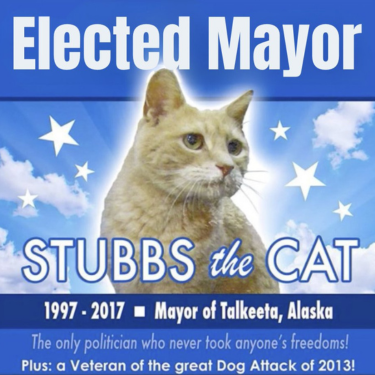30 Fun Facts about Cats, Uncover Surprising Cat Knowledge.
Table of content
In the UK, 29% of households have a cat, yet there’s still a lot we don’t know about these fascinating creatures. From their unique walking style to the size of the largest cat, you might be surprised by some of these fun facts about cats! Explore our collection of delightful cat information below.
Cats have captivated people’s hearts for thousands of years with their enigmatic personalities and charming appearances. They’ve become incredibly popular pets, and a survey reveals that 29% of households in the UK are home to a cat. Given their widespread presence, you might think we know everything about them, but that’s far from the case! There are countless intriguing facts about cats that you probably haven’t encountered before, from the world’s largest cat to their surprising walking style.Keep reading to uncover some of these fascinating and fun facts about cats you might be surprised by what you discover!

30 Fun and interesting facts about cats
1. The oldest known pet cat lived approximately 9,500 years ago.
Here’s a fascinating cat fact that’s sure to impress at your next dinner party: It was once believed that the Egyptians in ancient Egypt were the first to domesticate cats. However, in 2004, French archaeologists uncovered a 9,500 year old cat grave in Cyprus. This discovery reveals the oldest known pet cat, predating Egyptian depictions of cats by more than 4,000 years!
2. A cat served as the Mayor of an Alaskan town for 20 years.
An orange tabby named Mayor Stubbs was the mayor of Talkeetna, a small town in Alaska, for 20 years! Despite several uncontested elections and lacking any legislative authority, he was adored by both locals and tourists.

3. Cats spend about 70% of their lives asleep.
If you think cats spend a lot of time sleeping, you’re absolutely correct. According to Veterinary Hub, cats actually spend around 70% of their lives sleeping, which translates to approximately 13-16 hours a day. It’s truly a cat’s life!
4. The wealthiest cat in the world had £7 million.
According to Guinness World Records, the richest cat in the world is Blackie. When his wealthy owner passed away, he chose to leave his £7 million fortune to Blackie, completely bypassing his own family in the will. It's truly an astonishing interesting fact!
5. The record for the longest cat ever measured 48.5 inches.
Domestic cats are often thought of as small and delicate creatures. However, the world's longest cat was from the cat breed Maine Coon named Stewie, who measured an impressive 48.5 inches. Meanwhile, the record for the tallest cat goes to Arcturus from the cat breed Savannah cat, who stood at a remarkable 19.05 inches tall. Those are some truly impressive felines!
6. In 1963, a cat was sent into space.
You've heard of monkeys and dogs venturing into space, but did you know a cat did too? On October 18, 1963, Felicette, also known as 'Astrocat,' became the first and only cat to journey into space.

7. Isaac Newton is credited with inventing the cat door.
Isaac Newton is renowned for his work on gravity, but an interesting fact is that he is also believed to have invented the cat door. According to How Stuff Works, while conducting experiments at the University of Cambridge, Newton was frequently disturbed by his cats scratching at the door. To solve this, he had the Cambridge carpenter cut two holes in the door: one for the female cat and one for her kittens. These holes are said to still be visible at the university today. It's fascinating to know that even back in Newton's cat years, the need for a cat call was well understood, ensuring a better environment for cats to live.
8. Cats walk in a manner similar to camels and giraffes.
Have you ever observed that cats walk in a pattern similar to camels and giraffes? They move their right feet first, followed by their left feet, shifting half of their body forward at a time.
This unique walking sequence is shared only with camels and giraffes. Don’t take our word for it check out this video to see it in action!
9. Domestic cats share 95.6% of their genetic makeup with tigers.
This mind blowing cat study reveals that domestic cats share 95.6% of their genetic makeup with tigers which is a cat fact! They also exhibit many similar behaviour, including scent marking, urine marking, stalking prey, and pouncing.
10. Ancient Egyptians would shave their eyebrows as a sign of mourning when their cats passed away.
According to the Ancient History Encyclopedia, Herodotus documented in 440 BC that in Ancient Egypt, family members would shave their eyebrows as a sign of mourning when a pet cat died. Now that's a fascinating interesting fact!
11. Didga the cat is capable of performing 24 tricks in just one minute.
If you believe cats can't do tricks, prepare to be amazed by this cat fact. The record for the most tricks performed by a cat in one minute is 24! Didga a female cat showcased an impressive range of tricks, including rolling over and even jumping a bar while skateboarding!

12. The world record for the loudest purr is 67.8 dB(A).
Merlin, a black and white cat from Torquay, UK, currently holds the world record for the loudest purr by a domestic cat. His purr reaches 67.8 dB(A), which is roughly as loud as a shower! In comparison, most cats purr at about 25 dB. If you're looking for a cat breed known for its loud purr, the Birman cat breed is renowned for its noisy purr.
13. The oldest cat ever recorded lived to be 38 years old!
The oldest cat ever recorded lived to be 38 years and 3 days old. A female cat called Creme Puff, born on August 3, 1967, passed away on August 6, 2005. His owner, Jake Perry, also owned the previous record holder, Grandpa Rex Allen, who lived to the impressive age of 34. Clearly, Jake Perry had a special touch with his cats!
14. A domestic cat can reach speeds of up to 30 mph.
If you’ve seen your kitty sprinting around the living room, you know they can be incredibly fast. But here's a interesting fact cats can reach speeds of up to 30 mph, which is so quick they could outpace Usain Bolt in a 200-meter race!
15. Cats put their best paw forward.
One interesting fact cats have a dominant front paw, with studies indicating that female cats often prefer their right paw, while male cats tend to favor their left.
16. Cats are musical creatures!
Similar to birds, cats produce a wide range of sounds. They can make up to 100 different noises, while dogs are limited to about 10! Now that's impressive musical talent.

17. The record for the longest cat jump.
The longest jump by a cat is 2.30 m (7 ft 6 in), and was achieved by a cat called Sputnik and trainer Melissa Arleth (both from the United States), on the set of Lo Show Dei Record, in Milan, Italy, on 20 February 2024. Some cat breeds, like Savannah cats, can even jump to remarkable distance.
18. A German zoo achieved the first successful hybrid between a puma & leopard.
In the late 19th century, German animal collector Carl Hagenbeck's Tierpark zoo achieved the first successful puma-leopard hybrids. These hybrids, known as pumapards (puma father, leopard mother) and lepumas (leopard father, puma mother), were remarkable due to the genetic differences between the small puma and the big leopard. Despite the puma’s size resembling that of leopards and jaguars, it is classified as a small cat due to its throat structure, which prevents it from roaring. One notable pumapard from this era, raised by a fox terrier and displayed at Tierpark, had a puma like form but was smaller, with a coat of rosettes and a long tail. Cats are fascinating creatures, they spend hours each day grooming themselves, have unique taste buds that make them lactose intolerant, and their knowledge of what they can safely consume, like avoiding cat milk, is quite remarkable.
19. The oldest "Big Cat" fossils have been dated to 4.1 and 5.95 million years ago.
In 2010, fossils of the oldest known big cat, Panthera blytheae, were found in the Himalayas. Dated between 4.1 and 5.95 million years old, these fossils support the idea that big cats evolved in central Asia. Dr. Jack Tseng noted that the extinct cat breed was similar in size to a clouded leopard, with a broad forehead and short face. However, Prof. William Murphy argued that the link to snow leopards is weak and suggested the fossils might be an ancestor to modern big cats.
20. The worlds smallest cat only weights 1.6kg.
The world record for the smallest wild cat species is the rusty-spotted cat (Prionailurus rubiginosus), native to southern India and Sri Lanka. It measures 35–48 cm in head and body length, has a tail length of 15–25 cm, and adult males weigh only 1.5–1.6 kg. This cat is closely related to the larger Asian leopard cat (P. bengalensis), from which the Bengal domestic cat breed was developed through initial crossbreeding.
Slightly larger but often mistakenly cited as the smallest is the black footed cat (Felis nigripes) from southern Africa. It has a head and body length of 34–50 cm, a tail length of 15–20 cm, and adult males weigh between 1.6–2.1 kg.
21. The most high fives performed by a cat in one minute is 35.
The world record for the most high fives performed by a cat in one minute is 35, achieved by a male cat called Kit Kat and his owner Trisha Seifried in Orlando, Florida, united states, on March 22, 2023.
Kit Kat, a 13-year-old male, set this record during a pet expo in Orlando.
22. A cat was born with 28 toes!
The cat with the most toes is Jake, who has 28 in total, seven on each paw. A veterinarian confirmed this count on September 24, 2002. Jake, a male ginger tabby, resides in Bonfield, Ontario, Canada, with his owners, Michelle and Paul Contant. Each of his extra toes has its own claw, pad, and bone structure.

23. The most dice stacked on a cat's paw is 10.
The world record for the most dice stacked on a cat's paw is 10, achieved by Bibi and his owner L.C. Siew in Puchong, Selangor, Malaysia, on June 18, 2017.
Bibi, a domestic short haired cat, lives with his owner, Siew Lianchui, in Malaysia
24. Only 20% of Orange Cats Are Female.
Female cats have two X chromosomes (XX), while males have one X and one Y chromosome (XY). Since the color gene is on the X chromosome, male cats with an orange X will be orange. Therefore, all male kittens from an orange female will be orange, regardless of the father's color. In contrast, female cats need both X chromosomes to carry the orange gene, so both parents must be orange for an orange female kitten to occur.
Though the exact percentage is unknown, estimates suggest that 2–5% of cats are orange. So, if your cat is an orange female, she's part of a rare group!
25. Cats Have Fewer Taste Buds Than Dogs or People.
Cats have around 473 taste buds, significantly fewer than humans (9,000) and dogs (1,700). They can taste savory, salty, bitter, and sour flavors but are unable to taste sweetness. Interestingly, cats are obligate carnivores, so their diet is naturally meat based, and they don't miss the taste of sweetness. This is a fascinating fact about cat taste that every cat owner should know. Also, cats are lactose intolerant, so despite the common image of cats drinking milk, cat milk isn't suitable for them. Whether you're interested in a specific cat breed or just curious about feline biology, it's essential to understand these unique traits.
26. Cats Don’t Get Cavities!
While cats do experience dental issues, with up to 90% of those over 4 years old affected, they don’t get cavities like humans. This is because their pointed teeth differ from our flat ones. Instead, cats suffer from feline resorptive lesions, which cause the dentin to erode, resulting in a painful mouth. They can also develop gingivitis, stomatitis, and periodontal disease. An interesting fact cat owners should know is that despite their dental issues, cats' taste buds allow them to savor savory and salty flavors, although they can't taste sweetness. Furthermore, being lactose intolerant, they should avoid cat milk. These unique traits are common across all cat breeds.
27. Cats Have the Same Number of Brain Cells in Their Cerebral Cortex as Brown Bears
Despite a bear's brain being 10 times larger than a cat's, both have roughly the same number of information processing cells. Bears have about 251 million cells in their cerebral cortex, while tabby cats have around 250 million.
In comparison, humans have significantly more, with up to 26 billion cells in our cerebral cortex.
28. That Adorable Paunch on a Cat’s Belly Is Also Found in Lions and Tigers
The swinging, dangling pouch on your cat's belly is a normal feature present in both wild and domestic cats. It's important to distinguish between this normal pouch and excess fat that may indicate obesity. Rest assured, your veterinarian can advise if your cat is overweight.
There are several theories about this pouch. Some believe it acts as padding to protect internal organs during fights, while others think it provides extra skin for spreading their legs when running. It may also allow for expansion after consuming a large meal, as wild cats often eat heavily when they catch prey. Regardless of the reason, it adds to your cat's unique charm.
29. The newest recognized breed of domestic cat is a rex cat.
The newest recognized domestic cat breed is a type of Cornish rex the Selkirk Rex, sometimes called the "poodle cat" due to its thick, curly fur made up of three distinct layers. This breed originated from a spontaneous genetic mutation in Montana, USA, in 1987. It was officially acknowledged as a genetically distinct breed by the University of Veterinary Medicine in 2013. Today, it is recognized as a separate breed by the International Cat Association, the American Cat Fanciers Association.
30. Largest wingspan for a winged cat
Until recently, domestic cats with an unusual genetic skin disorder known as feline cutaneous asthenia (FCA) were shrouded in mystery and controversy. FCA causes the skin to become extremely stretchy, leading to the formation of long, wing like extensions when the cat grooms itself or rubs against objects. Occasionally, these "wings," which may include musculature, can even be moved up and down by the cat.
Several cases of winged cats have been reported globally. The largest recorded wingspan was a winged cat from northern Sweden, shot in June 1949 after allegedly leaping at a child. Swedish scientist Prof. Rendahl, who examined the cat's body at the State Museum of Natural History, found its wingspan to be 23 inches.
If you enjoyed this article, please share it with your friends! Do you have an exciting cat fact we didn’t cover or a unique quirk about your kitty? Share with us on our Facebook page!

















